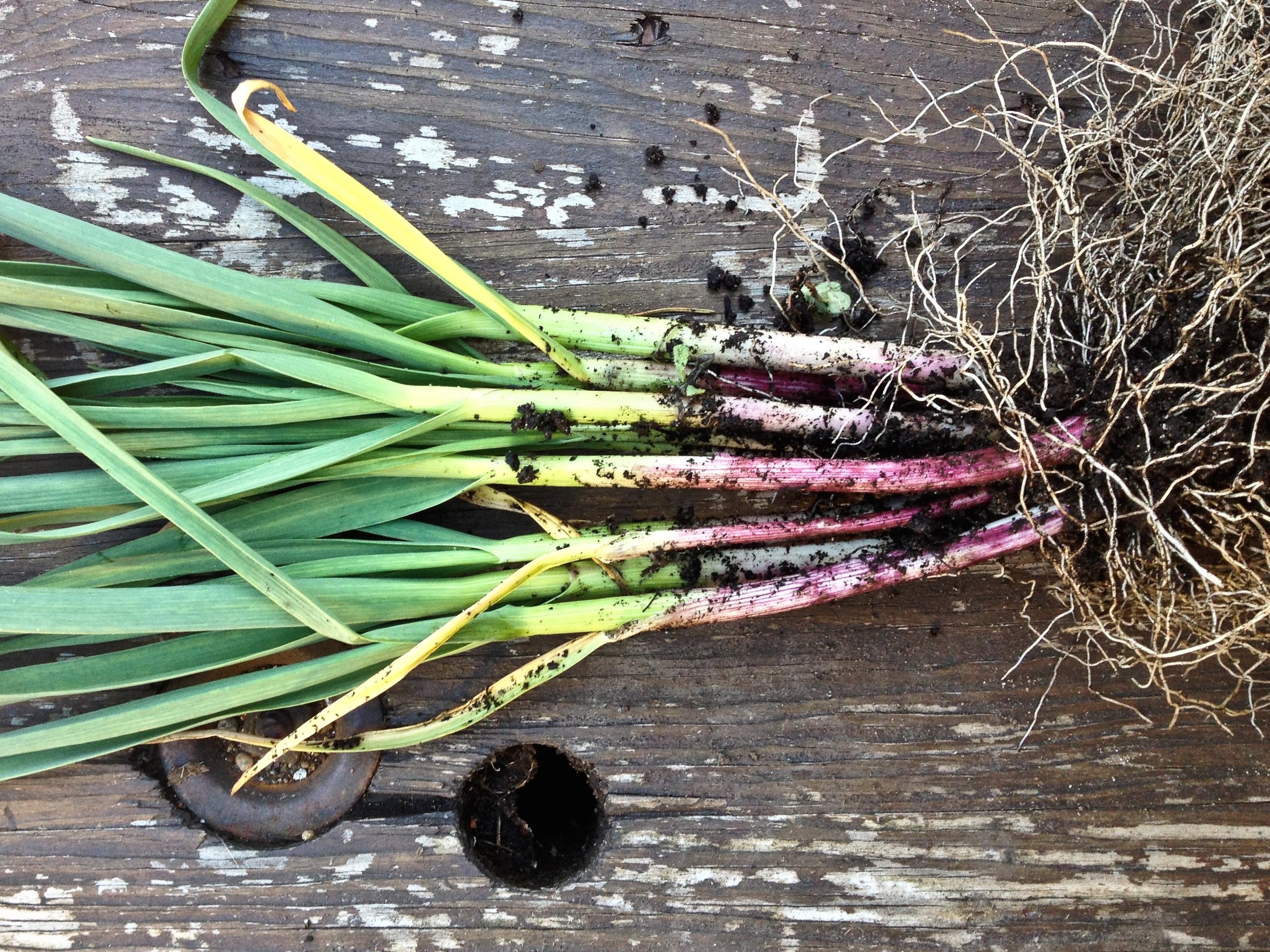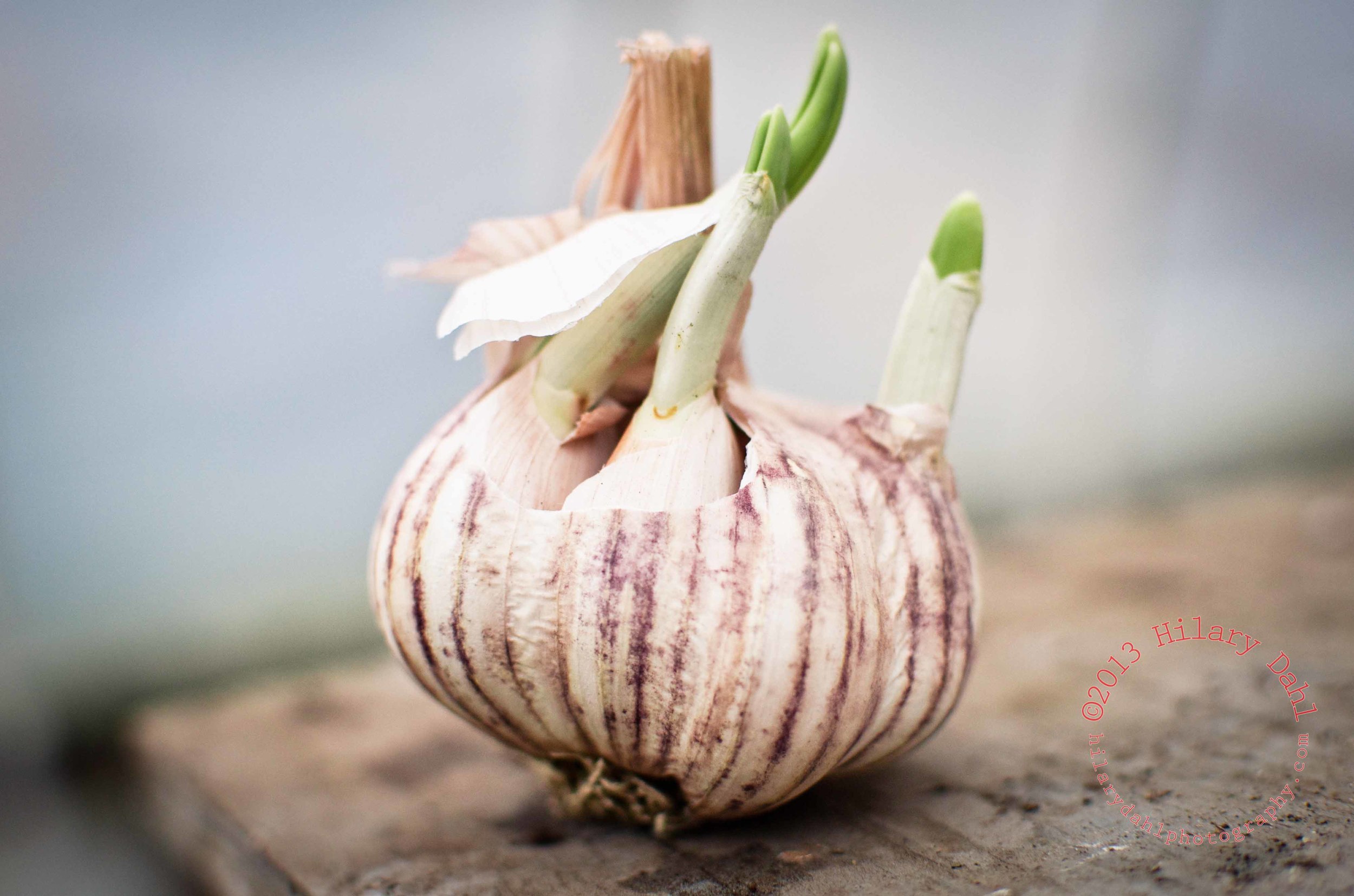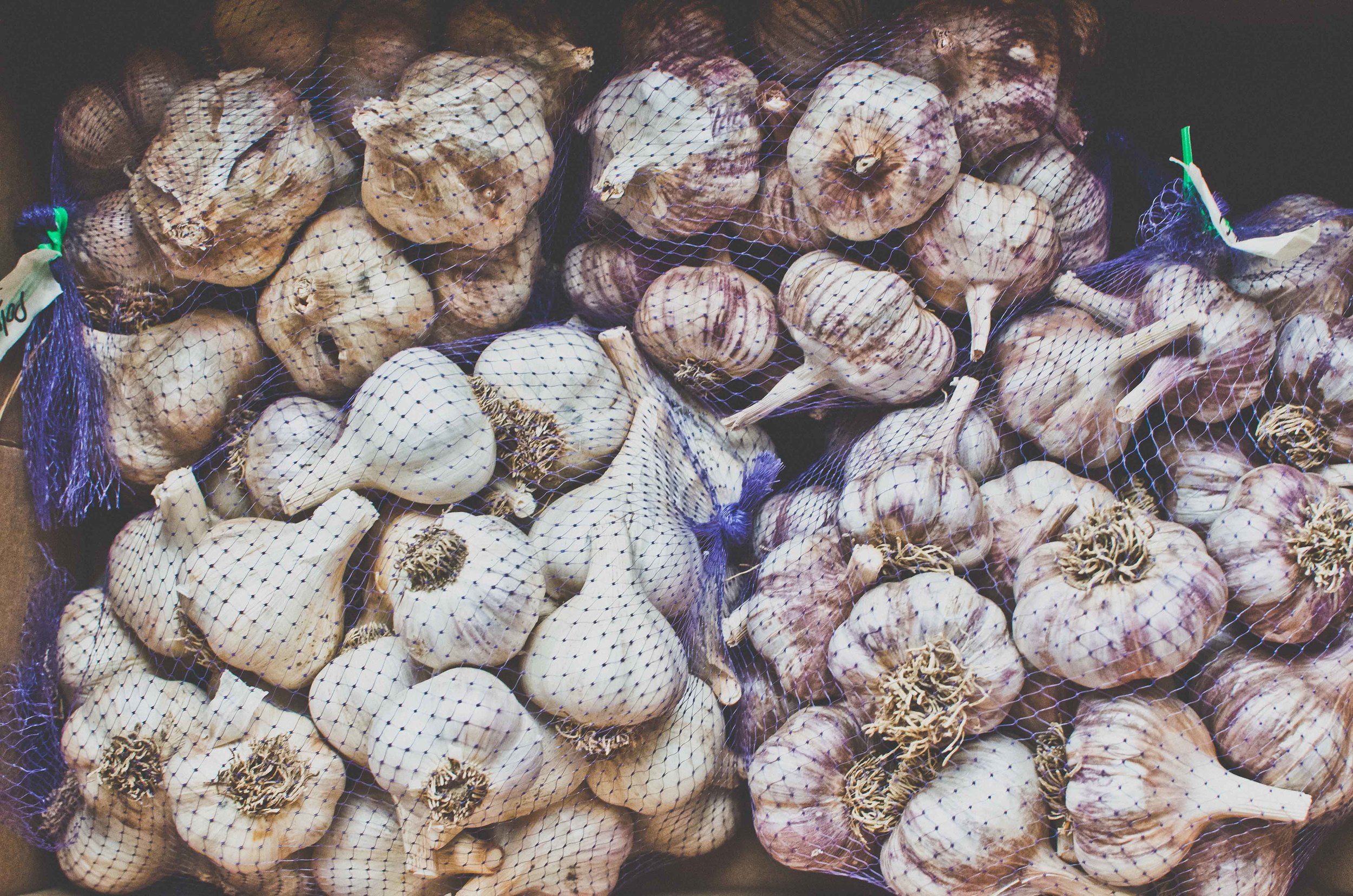Do you have a few cloves of sprouting garlic lying around your kitchen? Plant it! It may be too late to plant garlic that will produce fully developed heads, but planting garlic cloves (already sprouting or not) in the spring will produce tender and mild green garlic. This type of garlic is somewhat of a delicacy and is usually only found at farmers markets, but is also very easy to grow!
Garlic planted in the spring does not go through the process of vernalization, or 40 days at or below 40°F, and so the bulbs will not separate into cloves. The resulting green garlic looks more like a fat scallion. Like a scallion, the entire plant is edible and its sweet, grassy flavor can be enjoyed cooked or raw.
Since the garlic cloves will not mature into full heads the cloves can be planted very close together, with only an inch or two separating them. They can even be grown indoors and grow well in containers.
To plant:
Separate all the cloves for your head (or heads) of garlic
Loosen the soil in the area where you plan to plant
Plant each clove (pointy side up) about 3” deep, and 1-2” apart
Cover with soil
Fertilize with a balanced liquid or granular fertilizer once plants emerge
Your garlic should start to germinate in a few weeks, and is ready to harvest at any stage of its growth! We usually like to wait until the plant is around 6-8” tall so that the stalks long, but still tender. If your stalks start to become tough, trim them off.
We've actually devoted and entire episode of the Encyclopedia Botanica podcast to this topic, so tune in for more spring garlic inspiration:
EPISODE 38: GREEN GARLIC









Garlic and onions are some of the most satisfying crops you can grow in your home garden. Garlic is generally planted in the Fall, and onions are among the first transplants to be tucked into the early spring garden. These crops are both ready to harvest at the onset of peak harvest season, a harbinger of the forthcoming abundance. Luckily the crops are happy to be stored away for us to enjoy during less bounteous times of year. In this episode, we’re sharing some tips that will help you know when your crops are ready to harvest and how to store them.